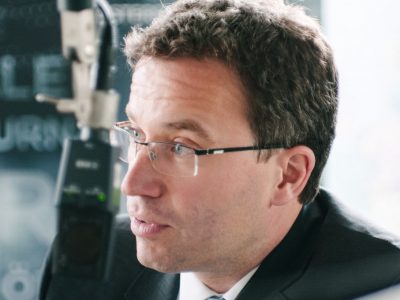Youth Unemployment — How Do The Austrians Do It?
Englischsprachiger Gastkommentar in der Zeitschrift “Social Europe” zur niedrigen Jugendarbeitslosigkeit Österreichs
In 11 EU member states youth unemployment is over than 25% and it is 49% or higher in Croatia, Spain and Greece. This fact is not a purely national problem. Instead, it constitutes one of the biggest challenges currently faced by the EU. Yet among its neighbours, Austria`s position is surprisingly stable due to its prized dual education system.
“Europa schaut nach Österreich” (Die Zeit), “The Austrian Miracle” (Foreign Policy), “Österreich gilt als Vorbild in der europäischen Arbeitsmarktpolitik” (FAZ), “Autriche, voyage au pays du plein-emploi” (Lâ Expansion) and “El secreto del bajo paro juvenil en Austria” (El Pais) are only a few of the international headlines focused on Austria´s labour market policy.
Not only is attention coming from foreign media, many top European politicians — recently the French Prime Minister Jean-Marc Ayrault — have turned to Austria in search of solutions to rising unemployment.
Austria´s low youth unemployment rates in particular, have garnered significant interest. But what are the main reasons behind Austria´s outstanding international ranking in this area?
Strong economic development
Over the past decade, Austria´s entire economic situation has developed far better than that of most other European countries. While average growth in real GDP terms was only 1.64% — reduced mainly by the global crisis of 2009 — this rate was substantially higher than the euro zone´s average (just under 1%) and noticeably above the EU 27 average (1.21%). In large part, this development already explains Austria´s superior labour market situation within the EU.
Austria´s economic policy reveals many reasons for the state´s exemplary GDP development. Close economic ties to the German “economic locomotive” and the savvy of many domestic companies to profit from Eastern European markets, are telling explanations.
Dual Education System
From a labour market policy perspective, the dual education model also offers undeniable advantages over any other education system:
First, it is always up-to-date. If the economy changes, or if production methods or provision of services change, trainees immediately learn to meet new demands. By nature, a predetermined school curriculum will always be behind the curve.
Second, following every school education, each graduate confronts the necessity of a job search. This step in particular, is often no longer necessary after concluding an apprenticeship. Many young trainees simply remain employed in the company where they received training.
Flexibility plus security
In Italy, where youth unemployment is currently over 40%, termination procedures are often drawn out for many years due to outdated termination protection – and similar problems exist in France or Spain. Is it not understandable then, that firms in these countries are hesitant to employ new personnel during unstable economic times?
For example: If a firm in one of these countries recieves an additional order that cannot be carried out by the current workforce, this order will either be rejected or the firm will cover the extra demand with overtime. Otherwise, they may also attempt to circumvent strict regulation using temporary agency work, legally dubious ostensible-self-employment schemes, or even resort to moonlighting.
Meanwhile, Austrian firms even employ additional personnel in tough economic times because they can be laid off when there are fewer orders. Still, those affected by cut-backs are not left to fend for themselves. By means of targeted support, a strong and active labour market policy ensures that people who have lost their jobs find new ones — whether through improving their qualifications, wage subsidies or other measures.
In times such as these, a modern and highly developed labour market needs both flexibility for the firm and security for the employee. Security in this sense, means the assurance of a proper social safeguard through support for strong, active labour market policy while also offering a consistent life-long learning strategy.
A strong, active labour market policy
Austria deserve great praise for the intervention strength of the Austrian Public Employment Service (AMS). The country currently has the lowest unemployment rate in the entire EU and thus comparatively less political pressure on this issue. Nevertheless, to pay for its various services the AMS has the fourth highest budget (proportionate to GDP and the unemployment rate) in the EU.
Therefore, if the AMS continues to be praised as one of the best labour market administrations in Europe, it must not be forgotten that there is a substantial budget in place to support the fight against unemployment in Austria.
The apprenticeship guarantee for young people in Austria
The most important labour market policy goal is the prevention of youth unemployment. This is completely uncontested among all parties and the social partners. Here, the most effective tool is the so-called “apprenticeship guarantee”, a model which also guides the political endeavour of the European Union to implement the so-called “European Youth Guarantee”.
The “apprenticeship guarantee” is a promise to each young person who wants to do an apprenticeship that they will be able to pursue such training if — despite the comprehensive support programme for companies offering apprenticeships — no vacant position is found.
Why is this apprenticeship guarantee so important and so necessary for young people that the Austrian state continues to pay more than €10,000 annually for each of these public apprenticeship positions?
We all know the answer: In Europe, jobs for people without vocational training or without higher education are quickly disappearing. This trend can even be seen in Austria where unemployment rates based on educational attainment have been recorded annually since 1990. Over 22 years, the so-called registered unemployment rate (national calculations different from EUROSTAT) of graduates (2,7%), people with the Austrian school-leaving certificate (4.2%), or apprenticeship certificate (6.5%) has largely remained stable. However, the unemployment rate among people with only a mandatory school-leaving qualification has more than doubled, increasing from 9,5% to 20,9%.
Why? An example sheds light on this issue: If a warehouseman used to get a job because he was strong, today this position requires knowledge of warehouse logistics software, communication with various departments, a licence to operate a fork-lift-truck and often the additional ability to organise one´s work independently; all of these competences require training. More and more young Austrians have begun to understand and accept this logic. After all, only around 7.5% still stop after compulsory schooling.
However, despite having the lowest unemployment in the EU, despite an apprenticeship guarantee and despite the corresponding low share of early school leavers compared with other EU member states, the same troubling developments as elsewhere can also be discerned from the unemployment rates according to education level in Austria. They are affected by the proliferation of technology, promotion of sustainable production and globalisation to name just a few factors. In short, we can no longer afford to keep “produce” so many young people with only a limited education.
This is precisely why the new government in Austria has planned to introduce mandatory education up to the age of 18 in its government programme. In Austria, we also understand that the way is a long one. However we know — and this is said with the utmost humility — we are on the right one.



